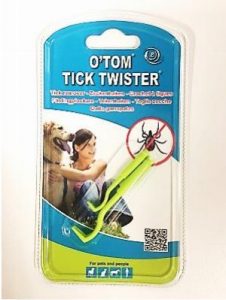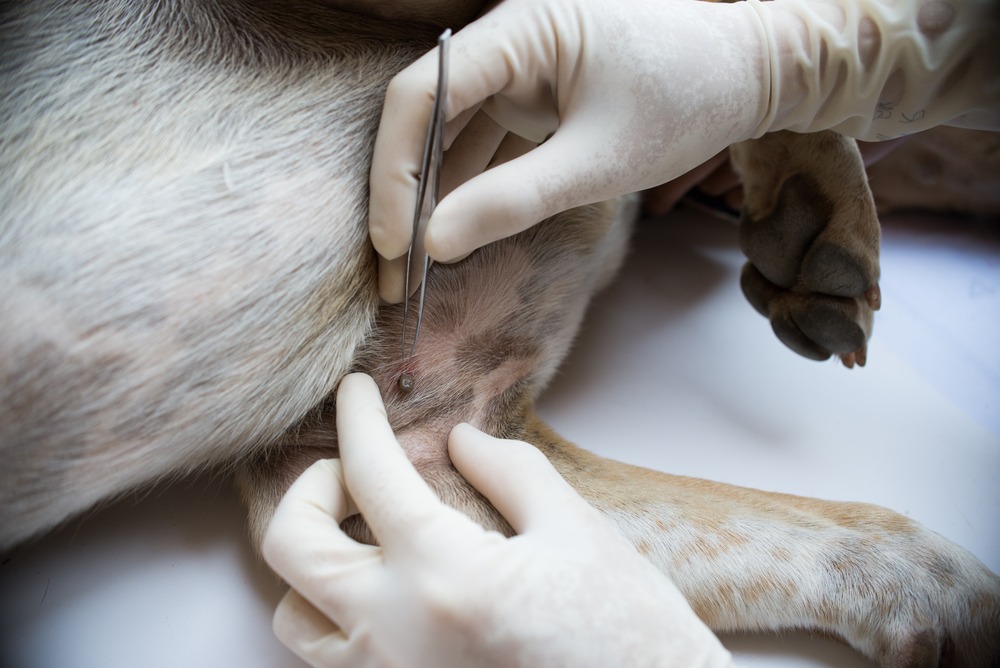Removing a tick or ticks from your dog can be unpleasant, but it’s important to do it quickly and correctly. A tick bite can cause tick paralysis, a very dangerous and potentially fatal condition that requires emergency veterinary attention.
Sadly, the condition is quite common in New South Wales. Sydney’s North Shore and Northern Beaches are a haven for ticks, especially during summer. This makes it crucial for residents of these areas to frequently check their dogs for ticks.
What You’ll Need
Before you start the removal process, gather everything you need to remove the tick. You’ll want everything you need within an arm’s reach, especially when dealing with an unsettled animal.
To remove a tick, you will need:
- Tweezers (preferably pointy ones)
- Rubbing alcohol
- Antiseptic wipes or ointment.
- Jar or other sealed container

If you live in an area with a high tick infestation such as Sydney’s Northern Beaches and North Shore we recommend purchasing a tick hook or tick twister which have been designed to remove ticks. These can usually be purchased from your local veterinary hospital or chemist.
Step 1: Remain Calm
Your dog needs to be calm when you remove the tick. The best way to keep your dog calm is for you to remain calm yourself. Unfortunately, any unusual prodding and poking tends to make dogs uneasy or nervous. It’s best to have another person assist you by gently holding your dog and keeping them relaxed.
Step 2: Pull Out the Tick
Many household tweezers have large blunt tips. When removing a tick, it’s best to use tweezers with a fine-point. This makes it easier to grasp the tick close to the skin and avoids tearing the tick and spreading possible infections into the bite area.
Spread your dog’s fur and grasp the tick as close to the skin as possible, while taking care not to pinch their skin. Twist the tick in a clockwise or anticlockwise direction and pull the tick up away from the animal’s skin.
Inspect the area after removal to ensure the head and mouthparts are removed. If not, take your dog to your local veterinarian to remove what’s left in their skin.
Step 3: Kill the Tick and Disinfect the Bite Site
Kill the tick by placing it in a container with rubbing alcohol. Keep the tick in a sealed container in case your pet begins displaying symptoms of a disease. Use antiseptic wipes or ointment to disinfect the bite site and keep an eye on it for signs of infection.
Disinfect your tweezers and thoroughly wash your hands. Take your dog to the vet if the bite site remains red or becomes inflamed.
Step 4: Reward Your Dog and Monitor Them
Praise your dog for being good and give them a treat as a reward. Make sure you keep a close eye on them over the next few days and be on the lookout for any strange symptoms, including:
- Fatigue and reluctance to move
- Weakness standing, jumping or walking up stairs
- Heavy or noisy breathing, panting and grunting
- Wobbly legs, especially in the back
- Paralysis throughout trunk, upper extremities and head
- Loss of appetite
- Coughing
- Vomiting
- Heavy salivations
- Collapse
If your dog displays any of these symptoms, it may be a sign of tick paralysis. Don’t delay if your dog is experiencing any of these signs or symptoms. Bring them into Northside Emergency Veterinary Services for prompt, professional treatment.
Call us now on (02) 9452 2933 or contact us online for more information.






